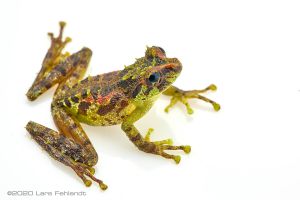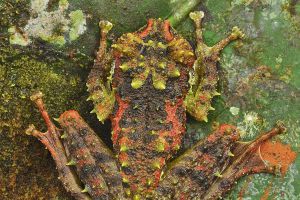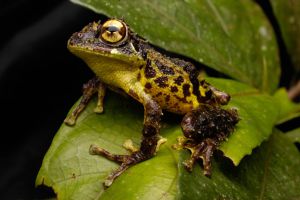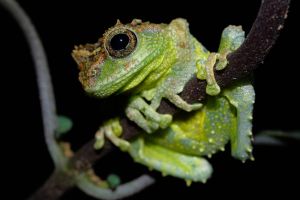
Frogs of Borneo

Frogs of Borneo

Frogs of Borneo

Frogs of Borneo

Frogs of Borneo

Frogs of Borneo

Frogs of Borneo

Frogs of Borneo

Frogs of Borneo

Frogs of Borneo

Frogs of Borneo
Bornean Families
Philautus:
macroscelis
Mossy Bush Frog
This taxon was formerly known as Rhacophorus everetti but was transferred to the genus Philautus based on molecular genetic data (Hertwig et al. 2012). Philautus macroscelis is a highland species that inhabits primary wet submontane and montane forests between 1000 and 1800 m a.s.l. Recent observations indicate that it occurs across all major mountain ranges of Borneo. The individuals illustrated here represent only a fraction of the remarkable variation in skin color and texture found in this species. The extent of this variation raises the question of whether all populations currently assigned to P. macroscelis indeed belong to a single species or if hidden diversity remains to be recognized.
The species grows relatively large for a Philautus. Adult males reach up to 32 mm in snout–vent length, while females can grow to nearly 50 mm. The body is moderately slender, and the hind limbs are long. The canthus rostralis is distinct, sharp and curved. Digits terminate in broad, slightly truncated adhesive disks, and the toe webbing is relatively well developed. Most populations possess conspicuous conical skin tubercles, especially along the outer edges of the limbs and on the posterior head and shoulder area.
This frog is superbly camouflaged: its coloration and tuberculate skin closely resemble lichen-covered or mossy bark. Brown is usually the dominant color, though mottling of green, yellow and even red can be found in populations. Limbs are banded. The variation in appearance among individuals is remarkable.
At night, males are often seen in loose groups near small streams and seepages, typically perching 1–3 m above the ground on twigs and leaves. The reproductive habits of this species are still unknown. A tadpole found at the edge of a small stream at Gunung Kinabalu was assigned to this taxon based on DNA analysis. This tadpole was described as non-feeding, with highly reduced mouthparts and a gut containing yolk material. Inger eta al. (2017) described the call as "a single, long, rattling note, sometimes emitted in short series. Sometimes the note is followed by 1–8 very short, ticking notes."
Version tracking
-
22.10.2025
updated








